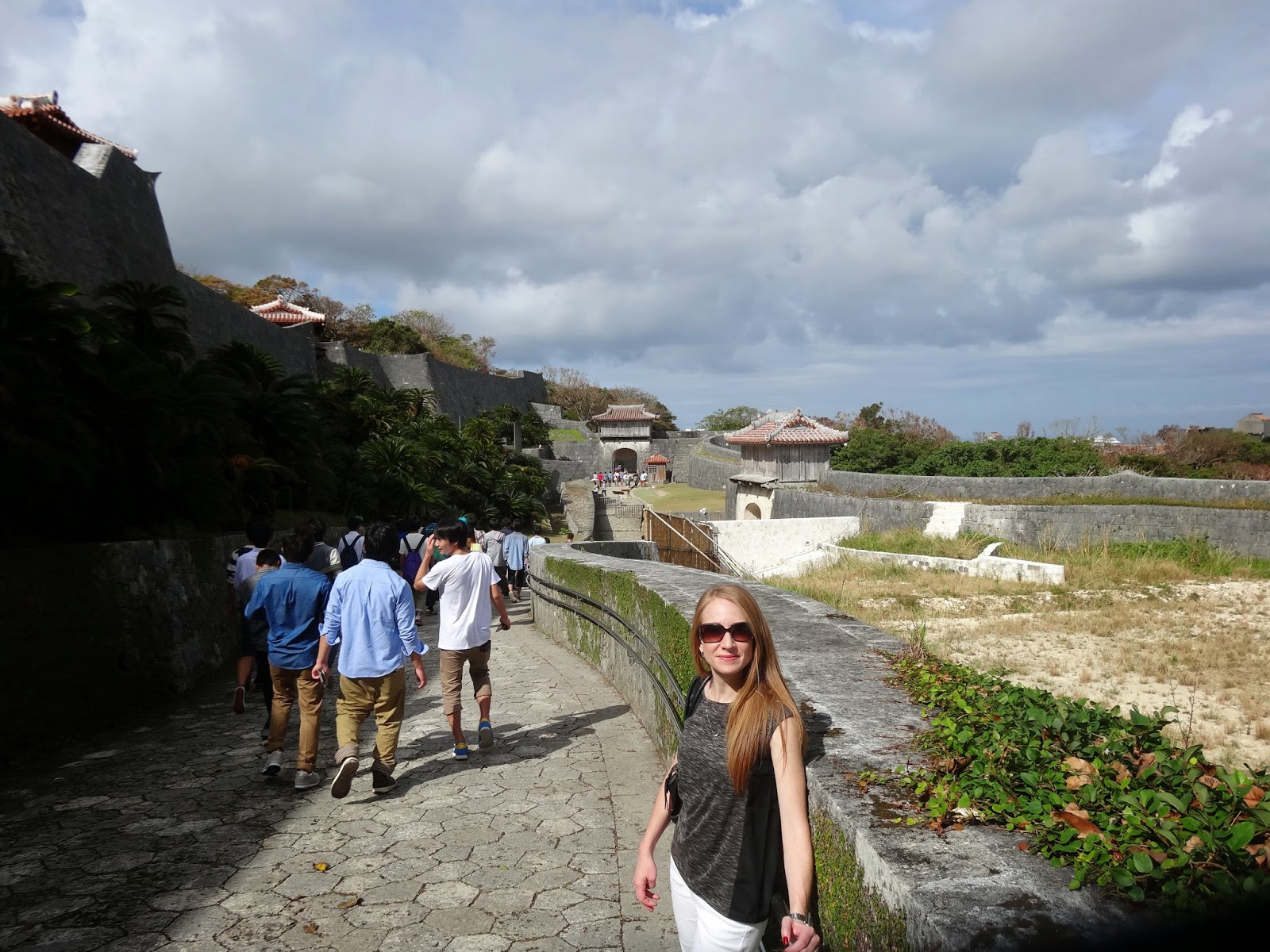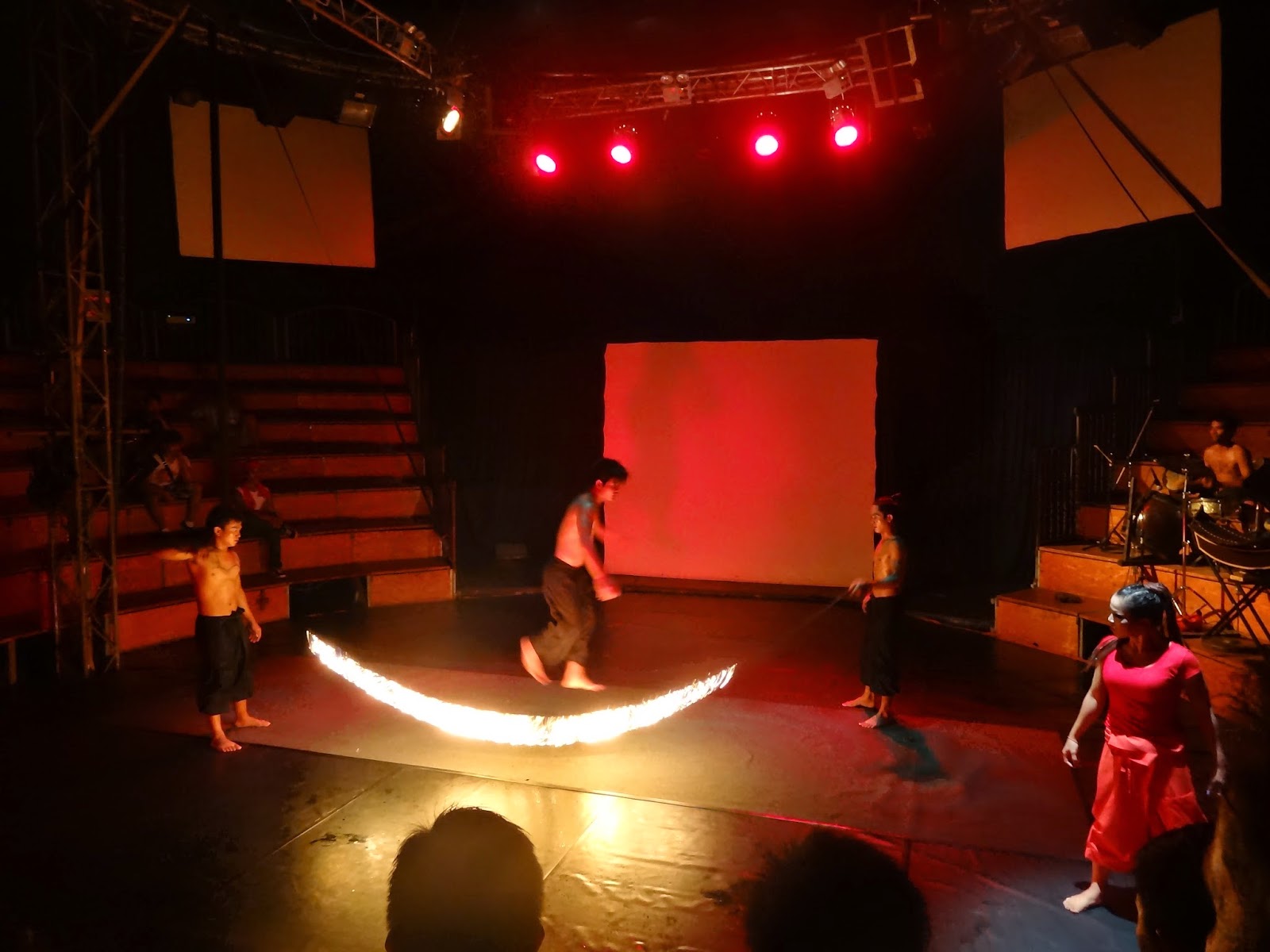For my 40th birthday (ugh), Chandra treated me to a surprise weekend trip. Based on my interests, I was thinking Hanoi or Japan and I was right, but didn't really envision the destination...Okinawa! Okinawa is a set of islands in the southwestern part of Japan. It is just northeast of Taiwan and an easy two hour direct flight from Hong Kong. Okinawa is most well known for being the birthplace of Kesuke Miyagi, a handyman who taught Daniel LaRusso the Okinawan art of karate. In a less important historical context, Okinawa was also the site of one of the deadliest battles of World War II.
We were only there for a weekend, so we just stayed in Naha, Okinawa's primary city. I've only visited Hawaii (Oahu) once, but Naha felt pretty similar - just a more Japanese version. Due to the significant American presence from the air force bases, there is a lot of American pop culture here. Examples include: Many fast food chains, including a big A&W right in the middle of "downtown" Naha; 1950's style ice cream parlors; "Hawaiian" shirts everywhere, houses/shopping areas look kind of like Honolulu or California.
Here we are at the central Market. It has a similar look to the shopping areas we saw in Dotoburi, Osaka. Here I wanted to buy a Orion beer T-shirt but they had the gall to charge $30 for it, so no dice.
A popular place to eat is the "food court" above the central market's food area. You can see the escalator behind Chandra in this picture:
A lot of people purchase fish and vegetables downstairs and then ask one of the stalls to prepare the food. A really good idea, but we were feeling kind of lazy and a bit intimidated so we just went with the menu.
Here you can see some of the American influence - one of the most popular Okinawan foods is Taco Rice. The ingredients are pretty much what you would expect: rice topped with meat+taco seasoning, lettuce, tomato, and cheese. Even though it sounded tempting, we decided to go with other traditional items, like bitter melon and local seaweed served with pork.
The most popular local seaweed was called sea grapes or "green caviar". It tasted really nice and had an interesting texture.
As alluded to earlier, our primary focus while visiting Okinawa was to see critical backdrops from the Karate Kid trilogy (boyhood home of Mr. Miyagi, place where Daniel and Kumiko had their first date, site of the final battle between Daniel-san and Chozen , etc.). Unfortunately it turns out they filmed the movie in Hawaii, so we settled for a general tour of southern Okinawa.
We started with Shuri Castle, which was the administrative center and residence of the Ryukyu kings until Okinawa became a Japanese prefecture in 1879.
Where's my selfie stick?
Our next stop was the former Japanese Navy Underground Headquarters. I don't have many cool pictures here, it's basically a small museum, followed by a walk through a tunnel and a few caves for short people. The big thing I noticed about the exhibit was the level of self-victimization regarding the Japanese Navy. I'm not a fan of the USA's military-industrial complex and resulting military aggression but methinks the Japanese Navy might have had an teensy-weensy little part in the Allies coming over to Okinawa for a visit. (Obviously the Okinawan civilians deserve significantly more sympathy and are honored in other exhibits throughout Okinawa.)
Our next stop was the Okinawa Peace Park Museum. It consisted of a large museum (which we didn't really have time to see) and a large outdoor Peace Park. The focal point of the Peace Park was the Cornerstone of Peace, a memorial that listed all of the victims of the Battle of Okinawa (> 240,000 people).
The garden was on the coast, so the surrounding views were also beautiful.
Our final big stop on the tour was Okinawa World, a surreal combination of a "Culture Kingdom", a lot of art/souvenir shops, and a big set of caves. The caves (Gyokusendo) were pretty cool.
I don't have pictures of the "Culture Kingdom" part of the Okinawa World. You didn't miss much.
That night, we did a little more exploring around "suburban" Naha. We went to a highly forgettable mall but eventually stumbled upon a cool pocket of restaurants. We ended up going to a Okinawan hipster diner type place, which kicked big time ass.
Here's my food. Sea grapes salad, locally grown pork on a sizzling plate, another type of seaweed disguised as pasta, some other food I don't remember, the local rice wine and Orion beer. Thumbs up says Paul.
On our final day, we had enough time to do a little more tourism. We decided to visit the Shikinaen garden, the second home of the Ryukyu royalty.
It was beautiful and relaxing. And just take a look at these pictures of Chandra.
Could she be any more adorable?

























































